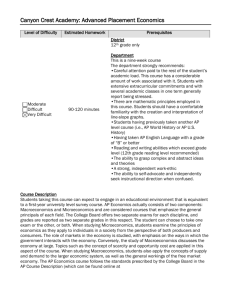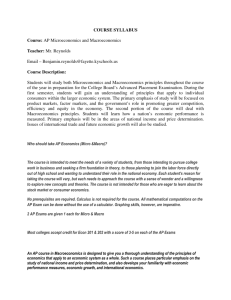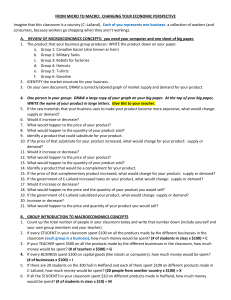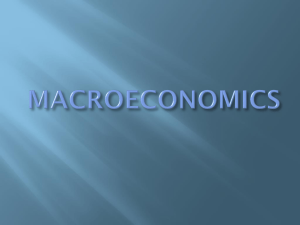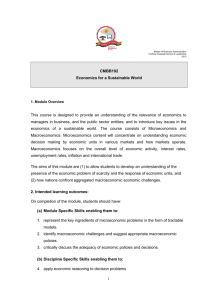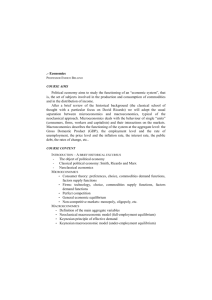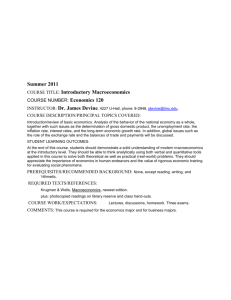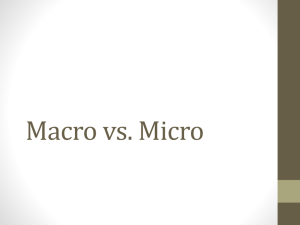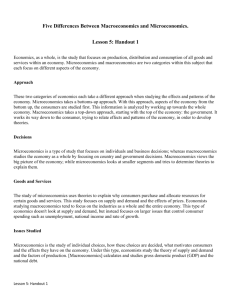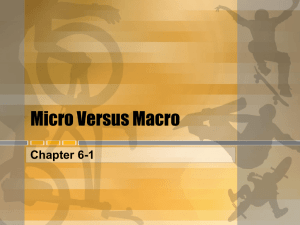Lecture 1: Introduction
advertisement
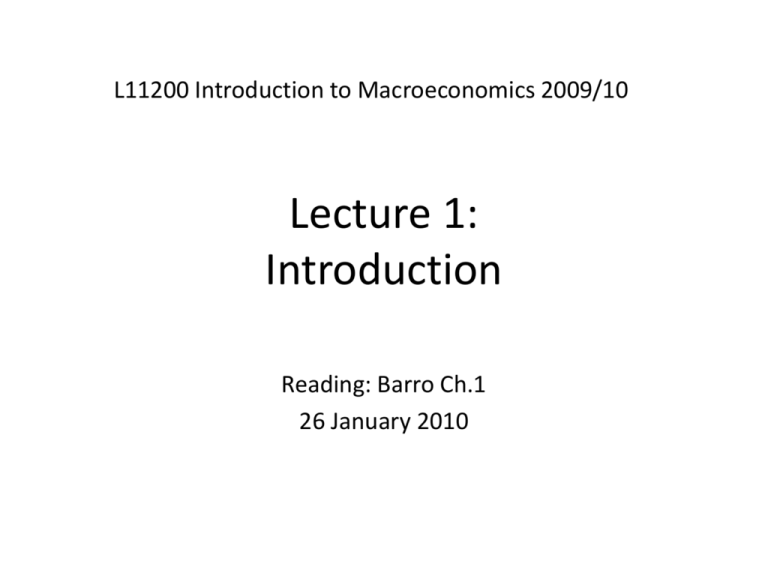
L11200 Introduction to Macroeconomics 2009/10 Lecture 1: Introduction Reading: Barro Ch.1 26 January 2010 Introduction • L11200 Introduction to Macroeconomics – Year 1, 20 credit, economics-only module – Follows on from Introduction to Microeconomics – 25 one-hour lectures – 7 one-hour small group tutorials – 1 mid-term exam (30%), 1 final exam (70%) – All electronic material available on WebCT Textbook • As with micro, the course follows a textbook ‘Macroeconomics: A Modern Approach’ (International Edition) R.J. Barro (2008) Thomson SouthWestern What is macroeconomics? • Microeconomics – ’That branch of economics that deals with small-scale economic factors; the economics of the individual firm, product, consumer, etc., rather than the aggregate of such individuals’ • Macroeconomics – ‘The branch of economics that deals with large-scale economic factors; the economics of a national economy as a whole.’ (both from Oxford English Dictionary) Two big questions in macro 1. What determines economic growth? 2. Why does output fluctuate between expansions and contractions? Economic Growth • Why do economies ‘grow’ over time? • Why do the U.K. and U.S. exhibit steady longrun growth, but Ethiopia no growth? • Section 2 (Lectures 3-9) builds a model of economic growth to explain these patterns. Economic Fluctuations • Why do economies with steady long-term growth exhibit volatile short-term growth? • What can governments do about ‘boom’ and ‘bust’, is a ‘fiscal stimulus’ a good idea? • Sections 2-5 (Lectures 10-24) develops a model of fluctuations and government policy to answer these questions Building a macro model • Microeconomics is concerned with individual agents and markets • Macroeconomics is concerned with the aggregate implications of microeconomics • i.e. macroeconomic outcomes (GDP, unemployment inflation) are the result of microeconomic actions. ‘Microfoundations’ • So good macroeconomic models have ‘microfoundations’ • We will build-up a macroeconomic model by putting together consumers, workers, entrepreneurs and capital owners etc. • That is why you study micro before macro • This is not A-level macro Summary • Two key topics in the course – Economic growth – Economic fluctuations • Models built on microeconomics, so don’t forget everything you learned last semester • Next time: introduction to aggregate statistics (GDP etc) before we start on the theory.


